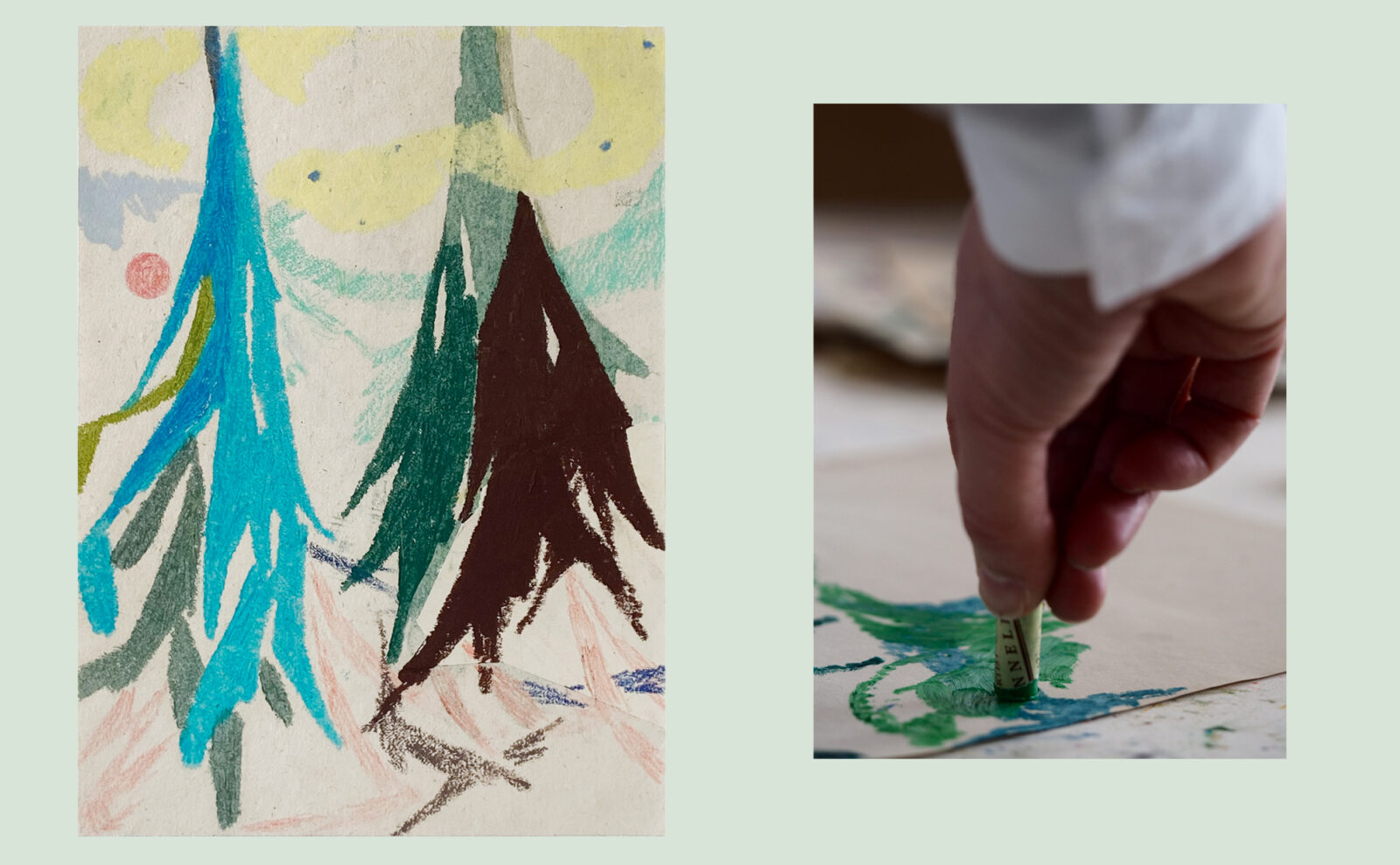OSL contemporary has the pleasure of inviting you to OSL series: Sofie Berntsen 'Landskap fra Hadeland' (Landscapes from Hadeland)' to celebrate the launch of her new artist book and accompanying exhibition of the same name.
The Exhibition Opening is on Thursday 22 February, 18.00-20.00
The Book Launch, OSL series: Sofie Berntsen 'Landskap fra Hadeland', is on Thursday 29 February, 18.00-19.00. There will be a reading from the book by writer and journalist Caroline Ugelstad Elnæs at 18:30.
Landskap fra Hadeland
Edited extract from Bjørn Hatterud’s text “i skogen kan vi legge fra oss alt” for the book “Landskap fra Hadeland”
Let us look more closely at Berntsen’s new pictures. In the gallery space, the discreetly framed works hang side by side around the room and form a frieze. The order in which they appear in the frieze is the same as they are reproduced in the book.
The motifs are tangible. They are drawn from the woods behind Berntsen’s studio and the view from her studio window. At the same time, some of the motifs have been abstracted into lines, fields, colours and gestures. Although we can recognise outlines and shapes from the woods and the view, even in the most abstract representations, they draw on various non-figurative artists, ranging from Wassily Kandinsky (1866–1944) to Günther Förg (1952–2013). In some of the drawings, the woods and the view are reproduced in a way that is perceptible to all. In others, they are presented as Berntsen experiences them.
In recent years, Berntsen has explored the potential of various types of oil pastels. By using five different brands, she has around 400 colours to choose from. As she works her way through the woods and the landscape, the process is both documentation, experimentation and meditation. The pastels are sometimes used on found paper that she reuses, other times on paper made of recycled materials.
Together the pictures form a wider landscape. They are just as much a narrative, bringing us through the woods, behind the light beneath the tree canopy, out to the view. At the same time, we can also read the works as a journey inward, in pursuit of what Olav H. Hauge referred to as a shelter in the woods, a place in the mind for internal productive calm. A place to work artistically in peace.
By stepping into the woods behind the studio, Berntsen enters the same landscape where a bear has recently ambled, and I ask if she is not frightened. She was frightened of the woods as a child, she replies, flying insects, crawling ants and the darkness of the soil. Now she likes the woods. I ask if she walks by herself, and she replies that it is what she prefers most of all. Or silently in the company of someone she can relax with. It is so intensely quiet. The senses are tuned in differently in the woods. The rustle of the leaves, the smells, the light between the trees. The feeling of reverence where the woods open out and the view reveals itself. It is those experiences that she draws on this time.
You can be free of social pressures in the woods. The woods expect nothing of you. You do not exist as a social individual in the woods; comparisons with other people disappear. You are not graded, assessed or put in social boxes. In the woods, you put aside perceptions about who you should be; you see your reflection in the woods, not in other people. In conversation with an entire forest, worries and considerations about who you are become meaningless, because in the forest you are simply just another human animal moving through. A human animal that stops to listen to the woods or gaze at the landscape. Who knows themselves to be part of something much larger, older and more enduring than socially constructed rules.
In the forest, we can put aside all that, whether we fit in or not, whether our life is successful in the eyes of others or not. The woods judge no one. In this freedom from thoughts of who we are, which the woods grant us, the senses are opened. We are in the world and see the world in a different way. We find time to experience how we see the world.
It can be as simple as that, in fact. That, this time, the meaning of Sofie Berntsen’s works is to show the female explorer from the inside. The gaze of a person who walks alone in nature.
In the new works, we are permitted to experience what it feels like to discover. How you see the world when you are truly alone in it, where you can absorb the surroundings when you do not need to take account of other people’s opinions.
- Bjørn Hatterud
